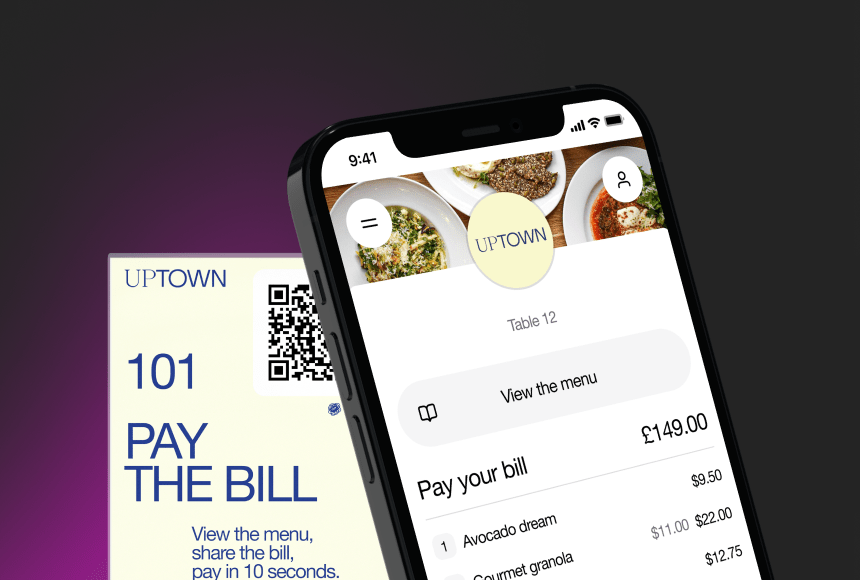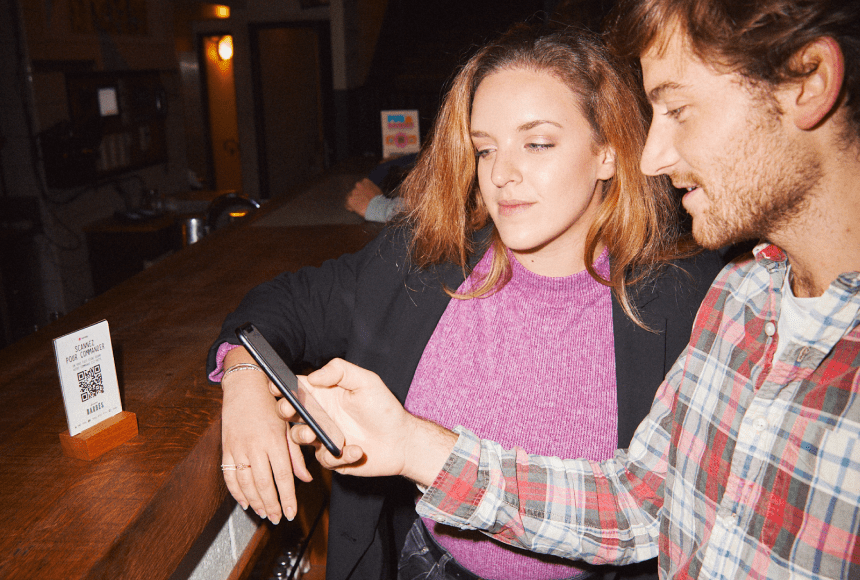
Streamlining Your Restaurant’s Checkout without the Pitfalls
Why QR Code Payments Are Transforming Dining
Contactless payments have become the norm in many UK restaurants, especially since customers now expect fast, effortless ways to settle their bills. According to UK Finance, digital and smartphone-based transactions continue to rise, showing that diners favour swift, app-driven methods. As part of this shift, QR code payments are rapidly gaining traction. A quick scan, a tap, and the bill is settled—no pen, no card machines, no fuss.
But while QR code payments offer plenty of advantages—like speed, convenience, and fewer physical touchpoints—they can also trip you up if not implemented correctly. Below, we’ll look at some common pitfalls and, crucially, how to avoid them. Whether you’re a quaint pub in Cambridge or a trendy bistro in Shoreditch, these tips can help you integrate QR payments without alienating your customers or stressing your staff.
1. Hiding the QR Code Where No One Can See
You’d be surprised how often this happens: the code is printed too small, tucked behind a condiment rack, or placed at an odd angle on the table. If diners have to hunt for it, you’re missing the point of convenience. Make it easily visible and user-friendly:
- Prominent Placement: Consider placing it on a table tent or stand, right where guests can see it as soon as they sit down.
- Clear Labelling: Add a small text like “Scan Here to Pay” or “Scan for Bill” to avoid confusion.
- Stable Surface: A shaky or angled holder makes scanning awkward, so invest in sturdy table displays.
When diners see the code straight away, they’re more likely to use it, saving your staff time chasing payments. Visibility is the first, simplest step for success.
2. Neglecting Staff Training
While QR codes ease transaction flow for diners, your servers must still understand how it all works—especially if some guests get stuck. A lack of training leads to confused staff who can’t assist effectively when a phone refuses to scan or a bill needs splitting. Here’s how to fix it:
- Run Quick Demos: Show your team exactly how the QR payment process works. Let them scan it themselves to experience the customer’s viewpoint.
- Provide Talking Points: Offer a short FAQ or cheat sheet, so staff know what to say when diners ask, “Does this include the tip?” or “How do I add a discount code?”
- Update Everyone: If you tweak the menu or the payment steps, let staff know immediately. Outdated knowledge can cause panicked fumbling in front of customers.
Well-informed servers feel more confident, which translates to better interactions. A few minutes of proper onboarding can save hours of awkward, frantic problem-solving later.
3. Forgetting to Prompt Tips
QR codes take away the routine of handing over a card slip where customers can add a gratuity. If you don’t configure your digital checkout to include a subtle tip prompt, you’ll likely lose out. Simple solutions:
- Pre-Set Tip Amounts: Let diners choose, say, 10%, 12.5%, or 15% with a quick tap. This gentle nudge often boosts tips.
- One-Tap Add-On: Make sure it’s as easy as one tap to confirm. The more steps, the likelier they’ll abandon the idea.
- Explanatory Copy: A short line like “Your tips help us reward our hardworking staff” can reassure guests of where their money goes.
Happier staff, better service, and higher morale—gratuities matter. Don’t let QR convenience accidentally wipe them off the table.
4. Overcomplicating the Checkout Screen
The beauty of QR code payments is simplicity. Some restaurants clutter the checkout with pop-ups, cross-sell items, or mandatory sign-ups. That can frustrate a diner who just wants to settle up and head out. Keep it lean:
- Minimal Fields: Stick to the total, tip option, and payment button. Don’t force an email address or loyalty enrolment, unless it’s truly optional.
- Upsells, Softly: If you do upsell (“Why not add a dessert?”), ensure it’s unobtrusive. A big ad can feel pushy.
- Responsive Design: Test the interface on different phone screens. Font too small or menus too large? Fix it before going live.
Remember, a streamlined checkout helps diners exit happily. If you bog them down with extra steps, the final impression might sour—hurting your chances of them returning.
5. Ignoring Wi-Fi or Connectivity Issues
All your efforts fall flat if diners can’t load the payment page due to poor connectivity. Maybe your restaurant’s thick walls block mobile signals, or your Wi-Fi bandwidth can’t handle peak crowds. Solutions:
- Bolster Your Wi-Fi: Ensure strong coverage across the entire dining area. Consider range extenders for large or tricky layouts.
- Check Signal Dead Zones: Do a quick roam with different phones to spot places where scanning might fail. Then rearrange furniture or add signage to lead diners to better areas.
- Offer a Plan B: Keep a couple of backup card machines for those with dead batteries or poor signal. This fallback ensures no one leaves annoyed.
Diners come for food and relaxation—not battling error messages. Guaranteeing reliable connectivity turns a neat QR concept into a true convenience.
6. Not Updating Menus or Prices in Real Time
QR codes often link to digital menus, which is brilliant for saving printing costs or updating specials daily. But if you forget to refresh prices or remove sold-out dishes, you create confusion and disappointment. Best practices:
- Instant Stock Removal: If your kitchen runs out of a special, ensure it vanishes from the digital menu. No more “We’re sorry, that’s not available.”
- Synchronise with POS: Some systems integrate directly with your point-of-sale, automatically updating the online menu as stock levels change.
- Highlight New Items: Turn your digital platform into a dynamic space, showcasing fresh arrivals or seasonal cocktails. It can boost upsells.
Think of your QR menu as a living document. Keeping it correct enhances diner trust and prevents the awkwardness of telling them the cod they ordered five minutes ago is out of stock.
7. Overlooking Data Security
With digital payments come concerns about fraud and data privacy. If customers sense you’re lax on security, they’ll hesitate to scan that code. Reassure them with strong safeguards:
- Encryption Everywhere: Ensure your payment platform uses end-to-end encryption. Publicly note that transactions are secure.
- Compliance with Standards: PCI-DSS compliance is a must, as is GDPR adherence if you’re collecting personal data. Mention it plainly on your site or at checkout.
- Regular Updates: Patch your systems frequently and keep up with vendor security releases. One neglected update can undo all your precautions.
Transparency about safety can tip reluctant diners into the comfort zone. Let them know they’re tapping into a well-protected system, and you’ll build long-term trust.
8. Skipping a Feedback or Review Prompt
Once the bill’s paid, many diners swiftly move on. That’s a lost opportunity if you’d like immediate feedback or online reviews. By weaving in a quick prompt—like “Enjoyed your meal? Leave a comment!”—you harvest fresh impressions:
- On-the-Spot Reviews: Partner with a platform, such as sunday, to direct satisfied diners to Google or social media, boosting your online credibility.
- Private Complaints: If something went wrong, you can prompt diners to flag it in a discreet form. You get a chance to fix the issue before it festers publicly.
- Data for Improvement: Over time, recurring feedback can highlight weak spots—e.g., under-seasoned sides or delayed main courses—letting you adjust quickly.
When reviews (and complaints) come in real time, you stay ahead of big problems while amplifying good vibes among your happiest customers.
9. Inadequate Signage or Customer Guidance
Never assume every diner knows how to use a QR code. Some people might be older or less tech-savvy, while others might wonder if scanning leads to spam. Overcoming these concerns is simpler than you think:
- Brief Instructions: A tiny note: “Open your phone’s camera, point at the code, then follow the link to pay.” That’s often enough to demystify it.
- Encourage Staff Support: Train your servers to offer help if someone looks puzzled. A quick demonstration can soothe doubts.
- Welcoming Tone: If you display signage that’s too clinical, it can feel off-putting. A warm phrase—“Scan to pay and skip the wait!”—sounds friendlier.
Adopting modern tech shouldn’t alienate guests. Providing a gentle nudge helps them discover the convenience, rather than feel hassled or left behind.
10. Not Checking Compatibility with Existing Systems
QR code payments aren’t meant to replace your entire infrastructure—they’re meant to complement it. But if your POS can’t sync transactions or your printer setup clashes with the new system, chaos ensues. Make sure everything fits together:
- Integration with Your POS: Check if the platform or app you choose merges with your existing system for real-time sales updates, tip tracking, and inventory management.
- Test End-to-End: Before rollout, do a mock transaction from scanning the code to finalising the sale in your POS. Sort out any hiccups early.
- Scalability: If you open a new branch or add extra seating, can the system grow with you? You don’t want to start from scratch every time you expand.
Ensuring compatibility prevents double work, missed transactions, or staff confusion about which system takes precedence. The best QR solutions blend neatly into your operation, not overhaul it entirely.
Building a Stellar QR Payment Experience
In a world used to on-demand everything, QR code payments can be a breath of fresh air for diners—when done right. Avoid these frequent oversights, and you’ll unlock the best of both worlds: a frictionless way to pay for customers and a boosted, more efficient workflow for your staff. When diners know they can settle their bill at a moment’s notice, your table turnover improves, tips go up, and your online reviews often shine a little brighter.
Of course, technology is only half the story. Solutions like sunday integrate smoothly with existing restaurant set-ups, managing quick, secure payments in a single scan. By sidestepping these classic missteps—prominently displaying QR codes, training staff, ensuring stable connectivity, and prompting optional gratuities—you’ll ensure everyone sees QR code payments as a delight, not a drag.
Modern diners value convenience as much as quality. Making the checkout painless keeps them in a good mood and eager to return. And that’s precisely what every restaurant aims for: happy faces, positive word-of-mouth, and a service flow that feels as smooth as the perfect latte. So, ditch the dusty card machine and let QR code payments turn a routine task into a memorable flourish at the end of a satisfying meal. Your customers—and your staff—will thank you.
Find out more today
Drop us your details below and we’ll reach out within the next 24
“Bill please” is a thing of the past.
With our integrated QR codes your customers pay in seconds, straight from their table.


